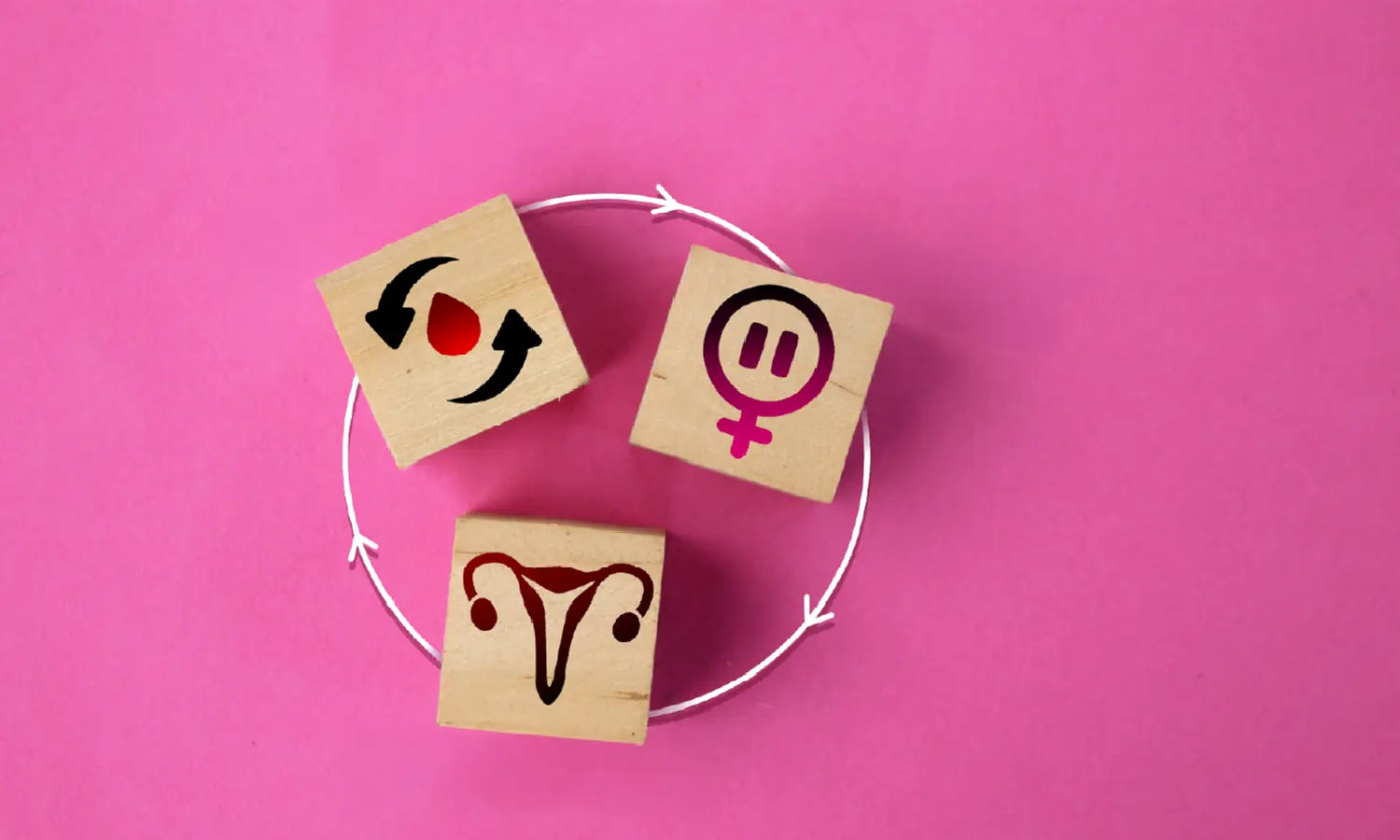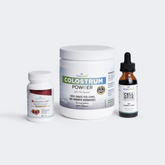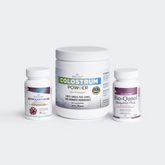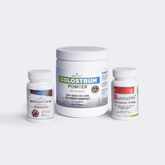Estimated Reading Time: 5 minutes
|Many of you must have heard the word estrogen, maybe in your biology classes or while randomly scrolling through Instagram reels. But what is it exactly? It's a vital hormone found in both men and women. In women, its role is much broader; it’s the primary hormone responsible for feminine features.
Most of you assume estrogen only deals with fertility and periods, but did you know its impact goes much further? While it’s key for reproductive health, it also helps strengthen bones, regulate mood, and support overall wellness.
By understanding how estrogen functions and shifts throughout life, you can take charge of your health and feel more in control. In this article, we’ll explore what estrogen does, how it influences female body systems, and what happens when your estrogen levels are too high or too low.
What is Estrogen?
Estrogen is a hormone made mostly in the ovaries, but also in lower amounts by fat cells and the adrenal glands. It regulates menstruation, supports pregnancy, and keeps many fundamental processes in the body running smoothly. Estrogen is a hormone with three primary forms:
-
Estradiol (E2): The most common type in premenopausal women.
-
Estrone (E1): The main estrogen after menopause.
-
Estriol (E3): Found mainly in the body during pregnancy.
How Does Estrogen Affect the Female Body?
Estrogen affects many functions in the body, including:
-
Reproductive System
-
Regulates the menstrual cycle, along with ovulation.
-
Promotes fertility and pregnancy.
-
Keeps the tissues lubricated and elastic, maintaining vaginal and uterine health.
-
Bone Health
-
It assists the body by absorbing calcium, which maintains bone density.
-
Osteoporosis, which increases fracture risk, occurs when estrogen levels are low.
-
Mood and Brain Function
-
Estrogen helps regulate the synthesis of serotonin, the “feel-good” brain chemical.
-
Changes in estrogen can influence how you feel emotionally and physically
-
Assists with cognitive functions like memory, concentration, etc.
-
Heart and Blood Vessels
-
Aids to keep your blood flowing smoothly by relaxing and widening your blood vessels.
-
It helps maintain good cholesterol levels and lowers the risk of heart disease.
-
Skin and Hair
-
Increases collagen production, which keeps skin firm and hydrated
-
Keeps your hair healthy and prevents thinning.

What Happens to Estrogen Levels as Women Age
Estrogen levels change during a woman’s life. Let’s see how:
-
Puberty: Estrogen increases, leading to breast development and menstruation.
-
Reproductive Years: Estrogen rises and falls during the menstrual cycle and increases in pregnancy.
-
Perimenopause (age 40 to 50): Estrogen production declines, which may cause hot flashes and mood swings.
-
Menopause (50+): Estrogen production decreases considerably, raising the risk of osteoporosis and heart disease.
As estrogen levels shift with age, it's important to understand what counts as a healthy balance and what happens when levels go too high or too low.
How Much Estrogen is Just Right? Too Much vs. Too Little
Estrogen levels vary with age.
Normal ranges are:
-
Adolescents (13–15): 8–77 pg/mL
-
Late teens (16–18): 22–88 pg/mL
-
Adults (36–45); 29–106 pg/mL, and
-
Perimenopause (46–55): 14–84 pg/mL
A significant shift from these ranges—either too high or too low—can trigger various symptoms in the body. Here’s how an imbalance may show up:
-
Too Much Estrogen (Estrogen Dominance)
High estrogen relative to other hormones (like progesterone) can cause the following symptoms:
Symptoms of High Estrogen:
-
Weight gain (particularly in hips, thighs, and abdomen)
-
Irregular or heavy periods
-
Mood swings, anxiety, and depression
-
Breast tenderness and bloating
-
Fatigue and low libido
-
Higher risk for estrogen-dominant disorders like polycystic ovary syndrome (PCOS), endometriosis, and fibroids
Causes of High Estrogen:
-
Hormonal contraception or hormone (replacement) therapy (HRT)
-
Obesity (fat cells secrete estrogen)
-
Chronic stress that throws hormonal balance off-kilter
-
Failure of the liver to efficiently break down estrogen
-
To top it off, exposure to endocrine disruptors (chemicals found in plastics, cosmetics, and pesticides)
-
Low Estrogen
Low estrogen levels can produce a number of physical and emotional symptoms, especially in menopausal and postmenopausal women.
Symptoms of Low Estrogen:
-
Hot flashes and night sweats
-
Lack of lubrication, leading to pain during intercourse
-
Disruptions in sleep and fatigue that last for a long time
-
They are brittle bones, which can cause osteoporosis
-
Memory issues, brain fog, and difficulty focusing
-
Higher chances of a heart ailment
Causes of Low Estrogen:
-
Natural aging and menopause
-
A very high level of exercise or low body fat
-
Dietary disorders or mineral deficiencies
-
Certain medical conditions, such as premature ovarian failure or some autoimmune diseases
-
Surgery to remove the ovaries or chemotherapy
Now that you’ve explored the effects of both high and low estrogen levels, let’s dive into practical strategies for maintaining a balanced estrogen level to support your overall well-being.
How to Keep Estrogen Levels in Check- The 6 Ways!
Maintaining healthy estrogen levels is vital for your overall health. Here’s how:
-
Eat a Hormone-Friendly Diet
-
Foods containing compounds that mimic estrogen, aka phytoestrogens: Present in soy, flaxseeds, and legumes, these compounds may imitate some effects of estrogen.
-
Healthy fats: Foods such as avocados, nuts, and olive oil are crucial for hormone production.
-
Fiber: Aids in the removal of excess estrogen from the body.
-
Exercise Regularly
-
Resistance training and weight-bearing exercises promote bone health.
-
A good way to balance hormones and lower stress levels is by moderate exercise.
-
Manage Stress
-
Steady stress raises cortisol, which can disrupt estrogen levels.
-
Hormones are regulated by practices such as meditation, yoga, and deep breathing.
-
Avoid Endocrine Disruptors
-
Limit your exposure to chemicals used in plastics, beauty (makeup, creams, etc.) products, and pesticides that can disrupt estrogen balance.
-
Consider Hormone Therapy (If Necessary)
-
Hormone replacement therapy (HRT) may ease menopause symptoms.
-
Try Natural Supplements for Support
-
Natural supplements such as black cohosh, Tocotrienol vitamin E, and evening primrose oil may also provide relief.
Conclusion
Estrogen is a powerhouse hormone that affects your health in a multitude of ways — reproduction and mood, yes, but also bone strength and heart health. For you to stay healthy and feel your best, you must understand how estrogen levels peak and decline over time and take steps to maintain hormonal balance. If you have symptoms of estrogen imbalance, see a healthcare provider for individualized advice.
With informed lifestyle choices and prescribed hormone-supporting supplements, you can help maintain estrogen balance and support overall well-being through every stage of life.
Disclaimer: The material provided in this article is for purely educational and informational purposes and should not be used as a substitute for professional medical advice, diagnosis, or treatment. Always consult with your physician or other qualified healthcare provider with any questions regarding a medical condition.
References
-
Brazier, Y. (2023) What to know about puberty. https://www.medicalnewstoday.com/articles/156451#what-happens:~:text=What%20happens%20during%20puberty%3F.
-
Cappelletti, M. and Wallen, K. (2015) 'Increasing women’s sexual desire: The comparative effectiveness of estrogens and androgens,' Hormones and Behavior, 78, pp. 178–193. https://doi.org/10.1016/j.yhbeh.2015.11.003.
-
Estrogen’s effects on the female body (2022a). https://www.hopkinsmedicine.org/health/conditions-and-diseases/estrogens-effects-on-the-female-body#:~:text=Estrogen%27s%20Effects%20on%20the%20Female%20Body.






































